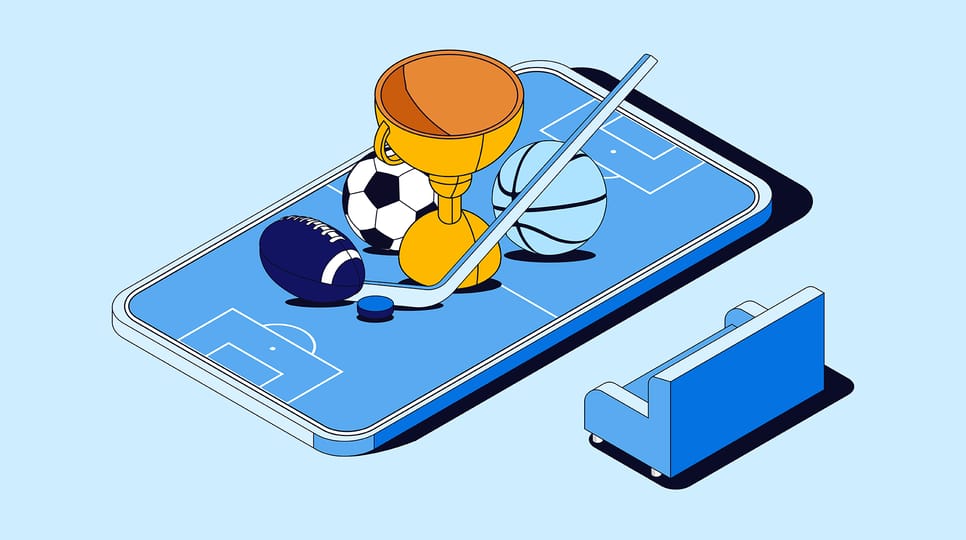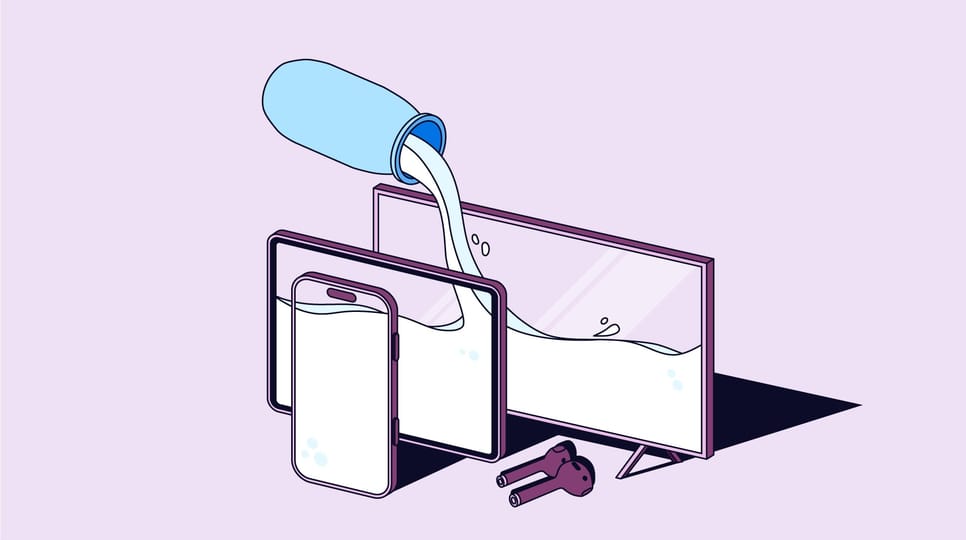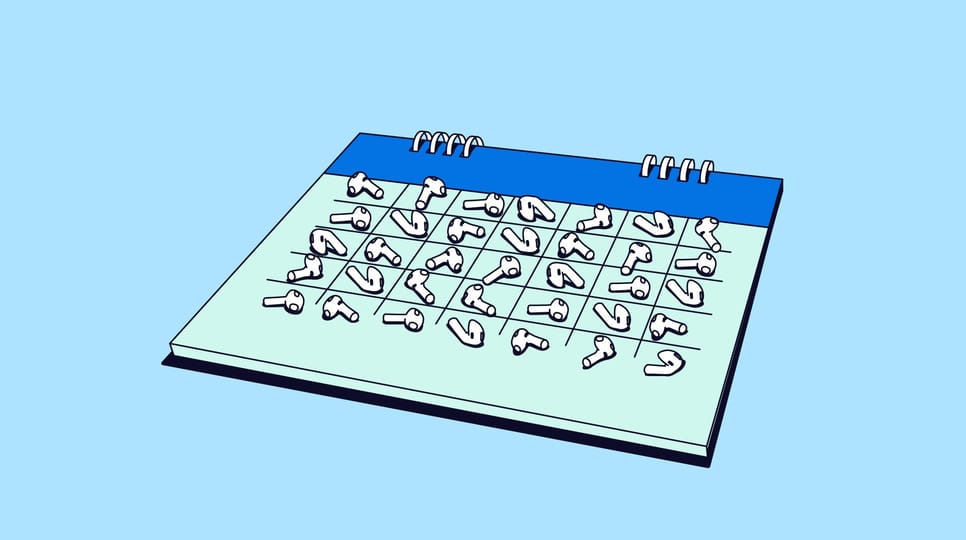Insights Omnichannel
Webinar: Premium Moments at Scale: How Digital Advertising Wins with Live Sports (Canada)

Recruiting fraud is a growing issue for many companies.
The Trade Desk takes this issue seriously and is taking steps to address it.
Share:
With display, TV, digital out-of-home (DOOH), and mobile advertising available, you have myriad options for reaching consumers. Yet some marketers still focus on just one or two channels, such as display or video. If these are most familiar to you, it might be tempting to stick with them.
But in doing so, you could be missing out on the power of omnichannel advertising — running ads across multiple channels — which gives you the chance to reach consumers at different touchpoints and create a unified customer experience. With a platform like ours, you can consolidate your advertising and run all your channels in one place to maximize your impact and streamline your campaigns.
Here’s a deeper dive into the benefits of omnichannel advertising.
You have hundreds of potential touchpoints with consumers, from the time they wake up until they go to bed. In fact, consumers spend an average of seven and a half hours a day with digital media and two-thirds of the time, they are on the open internet across different channels. Also, now that second and third screens are becoming the norm, even more opportunities are being created to reach your ideal customers on lots of different devices.
So if you’re not running an omnichannel strategy, you’re likely missing out on a lot of opportunities to connect with consumers: First thing in the morning, a consumer might log on to their tablet to scroll through news headlines. Then, during their commute, they might listen to a podcast or a music streaming service. Once at the office, they might get on the elevator and see digital outdoor elevator ads and then scroll through websites on their desktop for industry news. After work, they might see digital outdoor ads on their way to the gym or watch Connected TV while they play a game on their phone. Each of these moments acts as an opportunity for marketers to interact with consumers on their user journeys.
Omnichannel advertising helps you tell a cohesive story and measure across all of these touchpoints.
Often, advertisers simply see digital as a way to drive activation or performance. To them, it’s less about brand awareness and more about getting people to buy something or take an action on a website. Focusing on sales activation — trying to get people to buy something or take action on a website — can provide a short-term sales uplift. But over time, building brand awareness can have a greater impact on long-term sales.
The rise of digital means brand-building is now more important than ever. For the period between 1998 and 2010, the optimal budget split was 55 percent on branding and 45 percent on activation, according to IPA Databank.1 But for 2004 to 2016, the optimal split was 76 percent on branding and 24 percent on activation.
Purchase decisions don’t happen overnight. According to Salesforce, two-thirds of customers use multiple channels to complete a single transaction. If you’re expecting a quick sale from a single channel, you could be missing out on the bigger-picture opportunity to drive long-term brand awareness.
Carrying one message across multiple channels boosts effectiveness. There’s a 23 percent increase in ROI when marketers use three channels compared to just one, according to Analytic Partners.2 The increase in ROI shoots up to 35 percent when they use five channels.
Coegi and True Media’s partnership with a low-sugar wine brand shows the power of omnichannel ads. The agencies wanted to understand the impact of digital ads on in-store purchase behavior. Using our cross-channel premium inventory, Coegi created an omnichannel campaign that included Connected TV, online video, and display ads. NCS’ Purchase Data Metrics integrated with us to tie in-store sales to online media exposure so that the brand could focus its budget on better-performing inventory. Between December 2020 and February 2021, these efforts helped drive over $18,000 worth of in-store purchases, as measured by NCS.
StarHub, a leading telecommunication company in Singapore, also reaped the benefits of omnichannel advertising. The goal of their campaign was to drive target audiences — owners of Chinese mobile phone brands in Singapore — to their website to purchase the latest handset with a StarHub mobile plan. The company’s agency, Carat, worked with us to develop and execute a multichannel strategy using video, display, and native ads over a three-month campaign. Carat also worked with us to create custom audiences and use third-party data from our data management platform (DMP) to build a robust prospecting pool.
The campaign outperformed their expectations. They found that multichannel ad exposure drove consumer action four times faster than single-channel ad exposure. The cost per acquisition (CPA) decreased significantly, exceeding the original CPA goals by 97 percent and 86 percent for native and display, respectively. The video’s cost per completed view (CPCV) outperformed the campaign goal by 80 percent. Consumers also converted more quickly when they were shown all three channels compared to just one or two channels.
The campaign showed StarHub and Carat that they could manage media buys and achieve results in a more cost-effective way using omnichannel ads.
Controlling the frequency and pacing across channels avoids overwhelming consumers with too many ads at once and creates a better audience experience. Under a more fragmented model where each channel is managed separately, there’s no accounting for the fact that a consumer may have already heard your ad several times on a music streaming service, for example. They might get served your ad several more times on a different platform, which could annoy them. A more strategic cadence and frequency therefore mitigates the risk of bothering a consumer.
Take customer experience software company Zendesk as an example. The brand had focused its campaigns on direct-display publisher buys and paid social. But when the company wanted to raise brand awareness in Australia, its agency, Merkle B2B, worked with us to develop an omnichannel campaign. Merkle B2B managed multiple channels — including DOOH, broadcast video-on-demand (BVOD), audio, display, native, and high impact — in a single platform. A major challenge of running multiple channels in several platforms is that advertisers are unable to control for frequency, which leads to a consumer seeing the same ad many times. By running in one platform, they could control frequency and pacing across all the channels, ensuring the consumer saw the ad an optimal number of times and avoiding oversaturation.
With a target audience of customer service and support professionals, internal help desk and human resources departments, and CMOs, the Zendesk campaign hit a frequency of four ad exposures per individual. Merkle B2B activated our mid-funnel measurement tool to find out if target audiences were searching for content related to Zendesk after seeing an ad. They found that 749 target consumers conducted online searches and more than half of those (55 percent) searched for customer-service-related terms.
We at The Trade Desk are your one-stop shop to plan, execute, and measure omnichannel campaigns. Our platform has a global reach with premium inventory in Connected TV providers, online video, display advertising, audio, gaming, and digital out-of-home. Save time by enabling single-platform setup, with simultaneous access to optimizations across multiple channels and inventory sources.
We can help you adapt and evolve your strategy in real time as you gain a better understanding of which audiences are actually converting. You can connect with prospects across all sections of the sales funnel and tailor your approach to each section. You can plan against your KPIs based on your seed audience, activate across multiple channels, gauge how all facets of the plan help reach your goals, and gain insights for future campaigns.
Sources
1 IPA Databank, https://www.newsworks.org.uk/research/ipa-databank-study-2021/, 2021
2 Analytic Partners, https://analyticpartners.com/n…, 2019
Insights Omnichannel

Insights Omnichannel

Insights Omnichannel
